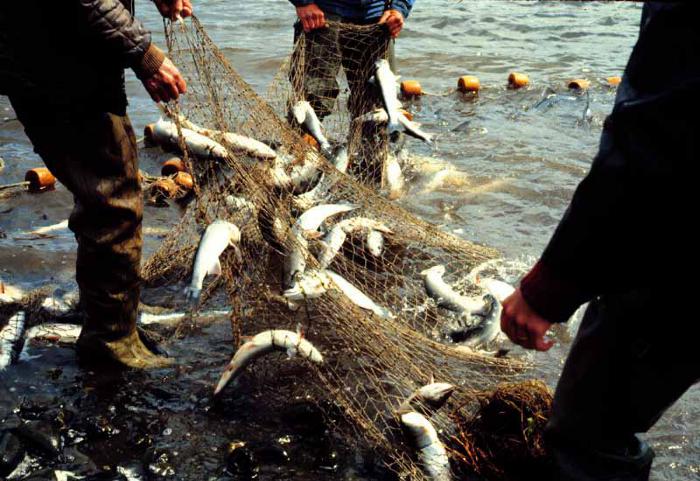Seine Net — Kugyasiq, Kug’asiq

A seine is a weighted fishing net, designed to hang vertically in the water. Seines are among the fishing gear Alutiiq people have used to capture salmon for millennia. Historic accounts indicate that Alutiiq people wove their seines from animal sinew and attached bark floats and stone sinkers: ancient versions of the cork and lead lines found on modern nets. Floats kept the top edge of the net on the water’s surface and sinkers weighted the bottom edge and helped to keep the net open. To ensure an evenly tied net, craftsmen used a net gauge, a small hand-held tool with a bar the width of the desired net mesh. By tying each knot against the bar, they could ensure that all of the knots were equally spaced.
Throughout much of the twentieth century, Alutiiq families living at the south end of Kodiak Island worked for canneries during the summer, beach seining and packing fish. Men worked in teams with dories to drag seines around schools of fish, pull the loaded net to the shore, and pitch the fish into a skiff. When commercial fishing waned, they moved to their own fish camps to put up supplies of salmon for their families. Elders recall the fun they had as children, pretending to beach seine and capturing sticklebacks with nets made out of cloth flour sacks.
Today Kodiak fisherpeople set seines behind fishing vessels, encircling schools of fish and then gathering the bottom of their nets to entrap them. Others anchor nets with a larger mesh in shallow water, where they trap fish by the gills (gill nets). Both techniques are popular methods of commercial fishing.
